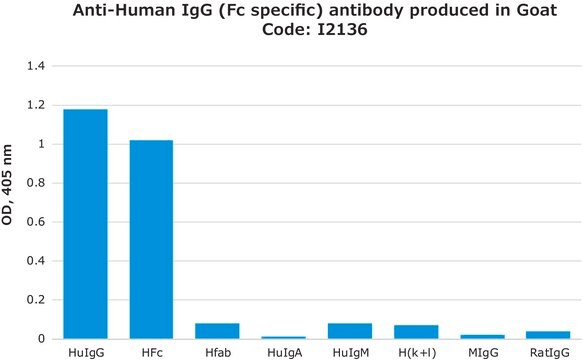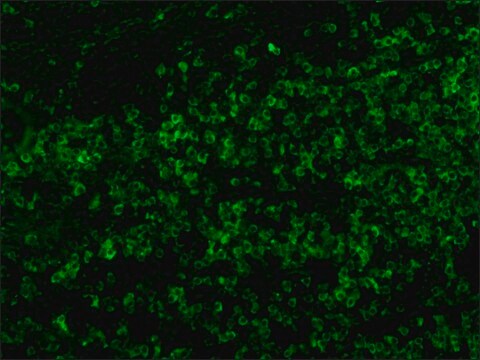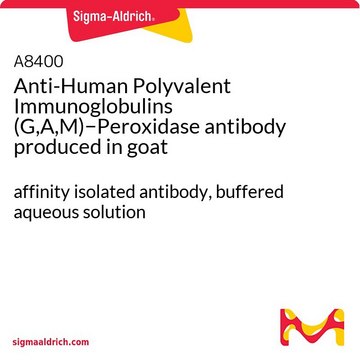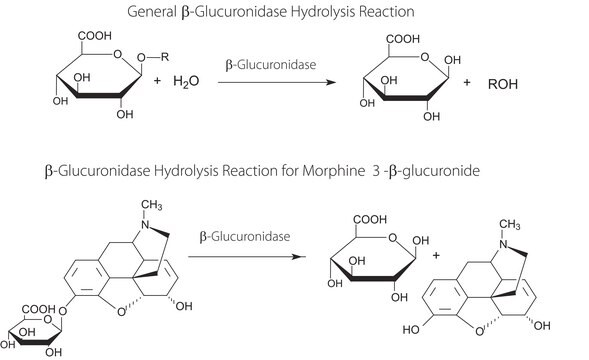I1761
Anti-Human Polyvalent Immunoglobulins (G,A,M) antibody produced in goat
whole antiserum
Autenticatiper visualizzare i prezzi riservati alla tua organizzazione & contrattuali
About This Item
Prodotti consigliati
Origine biologica
goat
Coniugato
unconjugated
Forma dell’anticorpo
whole antiserum
Tipo di anticorpo
secondary antibodies
Clone
polyclonal
contiene
15 mM sodium azide
tecniche
immunoelectrophoresis: suitable
Condizioni di spedizione
dry ice
Temperatura di conservazione
−20°C
modifica post-traduzionali bersaglio
unmodified
Cerchi prodotti simili? Visita Guida al confronto tra prodotti
Descrizione generale
Immunoglobulin G (IgG) belongs to the immunoglobulin family and is a widely expressed serum antibody. IgG is usually found as a monomer. IgG antibody subtype is the most abundant of serum immunoglobulins of the immune system. About 70 percent of the total immunoglobulin consists of IgG. Immunoglobulin M (IgM ) is a high molecular weight protein that has five or six subunits. Human serum shows low concentration of IgM monomers. It has a high carbohydrate content of about 12%. It is the first immunoglobulin produced by neonates.
Specificità
The antiserum is determined to be immunospecific for human IgG, IgA and IgM. Reactivity is also observed against light chains.
Applicazioni
Anti-Human Polyvalent Immunoglobulins (G,A,M) antibody produced in goat has been used in immunoassays/sandwich immunoassay and enzyme-linked immunosorbent assay (ELISA).
Azioni biochim/fisiol
IgG antibody subtype is the most abundant of serum immunoglobulins of the immune system. It is secreted by B cells and is found in blood and extracellular fluids and provides protection from infections caused by bacteria, fungi and viruses. Maternal IgG is transferred to fetus through the placenta that is vital for immune defence of the neonate against infections. IgA antibody is secretory antibody and is present abundantly in mucous linings of gastrointestinal, respiratory and genitourinary tracts, tears and saliva. IgM antibodies are present as pentamers in the serum and are produced in response to antigens.
Immunoglobulin G (IgG) participates in hypersensitivity type II and type III. Immunoglobulin M (IgM) acts as an antigen specific part of the B cell antigen receptor on the surface of B lymphocytes that are not stimulated, in its monomeric form. Polymeric IgM molecules also serve as important activators of the classical complement cascade. IgM is essential in agglutination and cytolytic reactions.
Stato fisico
The antibody is supplied as a liquid containing 0.1% sodium azide.
Stoccaggio e stabilità
For continuous use, store at 2-8 °C for up to one month. For extended storage, the solution may be frozen in working aliquots. Repeated freezing and thawing is not recommended. Storage in "frost-free" freezers not recommended. If slight turbidity occurs upon prolonged storage, clarify the solution by centrifugation before use.
Non trovi il prodotto giusto?
Prova il nostro Motore di ricerca dei prodotti.
Codice della classe di stoccaggio
10 - Combustible liquids
Classe di pericolosità dell'acqua (WGK)
WGK 3
Punto d’infiammabilità (°F)
Not applicable
Punto d’infiammabilità (°C)
Not applicable
Dispositivi di protezione individuale
Eyeshields, Faceshields, Gloves, type ABEK (EN14387) respirator filter
Scegli una delle versioni più recenti:
Possiedi già questo prodotto?
I documenti relativi ai prodotti acquistati recentemente sono disponibili nell’Archivio dei documenti.
High level transient production of recombinant antibodies and antibody fusion proteins in HEK293 cells
Jager V, et al.
BMC biotechnology, 13(1), 52-52 (2013)
The Immunoglobulins: Structure and Function (1998)
Molecular Genetics of Immunoglobulin, 17 (1987)
Volker Jäger et al.
BMC biotechnology, 13, 52-52 (2013-06-28)
The demand of monospecific high affinity binding reagents, particularly monoclonal antibodies, has been steadily increasing over the last years. Enhanced throughput of antibody generation has been addressed by optimizing in vitro selection using phage display which moved the major bottleneck
Douglas B Weibel et al.
Analytical chemistry, 77(15), 4726-4733 (2005-08-02)
This paper describes torque-actuated valves for controlling the flow of fluids in microfluidic channels. The valves consist of small machine screws (> or =500 microm) embedded in a layer of polyurethane cast above microfluidic channels fabricated in poly(dimethylsiloxane) (PDMS). The
Il team dei nostri ricercatori vanta grande esperienza in tutte le aree della ricerca quali Life Science, scienza dei materiali, sintesi chimica, cromatografia, discipline analitiche, ecc..
Contatta l'Assistenza Tecnica.








